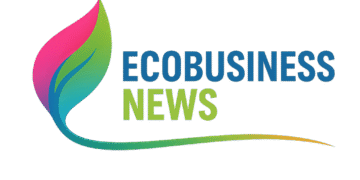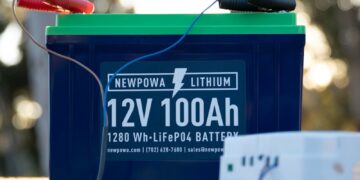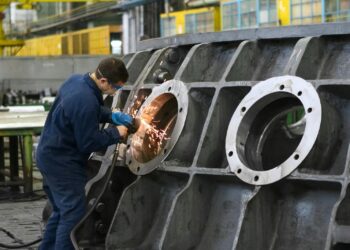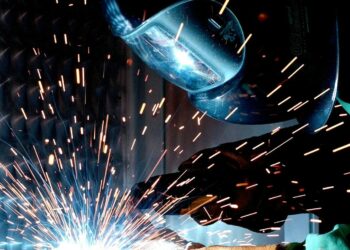In the fast-evolving world of renewable energy, wind farms and solar arrays are no longer just about generating clean power—they’re becoming hubs of innovation through a concept known as Repowering as a Service (also called Repurposing as a Service or Re-energizing as a Service). This transformative business model is breathing new life into aging wind and solar infrastructure, extending their lifecycle, boosting efficiency, and unlocking new revenue streams for eco-conscious businesses. Let’s explore how repowering is reshaping the renewable energy landscape and why it’s a game-changer for the eco-business world, as highlighted by Eco Business News.
What is Repowering as a Service?
Repowering as a Service involves upgrading, retrofitting, or repurposing renewable energy assets—like wind turbines and solar panels—with cutting-edge technology to enhance performance or adapt to new uses, all without the need for a complete rebuild. It’s like giving an old wind farm a high-tech makeover, enabling it to generate more power, store energy, or even serve innovative purposes like powering data centers or supporting green hydrogen production.
As one industry observer noted on X, “Fully amortized wind and solar farms can be repowered with the latest tech and lower costs than a greenfield site. Don’t mistake this for a problem, in fact it’s one of the reasons for my optimism.” This approach aligns with the circular economy, minimizing waste and maximizing value, making it a cornerstone of sustainable business strategies.
Why Repowering Wind and Solar Farms Matters
Wind and solar farms are built to last, but their technology can become outdated within a decade. Turbines from the early 2000s, for instance, are less efficient than modern models with larger blades and smarter controls. Similarly, older solar panels may lag behind today’s high-efficiency photovoltaic tech. Instead of decommissioning these sites, repowering offers a smarter, more sustainable solution:
- Cost Efficiency: Repowering leverages existing land, grid connections, and permits, often making it cheaper than building new farms from scratch.
- Sustainability: Upgrading reduces the need for new raw materials, lowering the environmental footprint of renewable projects.
- Extended Lifespan: Repowering a wind farm with modern turbines can extend its life by 20-30 years, maximizing return on investment.
- New Revenue Streams: Repowered sites can support emerging technologies like battery storage or co-located data centers, creating new income sources.
How Repowering as a Service Works
Repowering as a Service is typically managed by specialized renewable energy companies or tech firms that assess, upgrade, and maintain sites. Here’s how it works for wind and solar farms:
- Site Assessment: Experts evaluate equipment condition, energy output, and grid connectivity to determine upgrade potential.
- Technology Upgrades: For wind farms, this might mean installing larger, more efficient turbine blades or advanced control systems. For solar farms, it could involve swapping panels for high-efficiency models or adding energy storage systems.
- Repowering or Retrofitting: Upgrades are implemented with minimal disruption, sometimes refurbishing components to further cut costs.
- New Use Cases: Repowered sites can support innovative applications, like powering microgrids for rural communities or producing green hydrogen.
- Ongoing Management: Service providers offer maintenance and monitoring to ensure optimal performance.
Real-World Examples of Repowering in Action
Repowering is already making an impact globally, showcasing its potential for eco-businesses:
- Wind Farm Repowering: In Texas, a leader in U.S. wind energy, older farms are being repowered with modern turbines, boosting output by up to 20% without new land, as noted in industry reports. This aligns with the state’s unstoppable wind energy growth.
- Solar Farm Upgrades: In Germany, floating solar farms on lakes are being retrofitted with battery storage, supporting the country’s goal of [70 GW solar capacity by 2035](https://www.solarpower europe.org).
- Innovative Use Cases: Google’s initiative to build data centers alongside repowered wind and solar farms reduces reliance on fossil fuel grids, setting a standard for sustainable tech infrastructure.
Challenges and Opportunities
Repowering isn’t without hurdles. Upgrading older sites can be complex, requiring careful planning to avoid downtime or grid issues. Regulatory challenges, like permitting for new equipment, may also arise. Upfront costs, though lower than new builds, can deter some operators without clear financing models.
Yet, the opportunities are vast. Repowering aligns with global decarbonization goals and circular economies, attracting investors and governments. It also creates jobs in engineering and maintenance, boosting local economies. With 98% of new U.S. power capacity in early 2025 coming from wind and solar, repowering ensures these assets remain competitive.
The Future of Repowering in Eco-Business
Repowering as a Service is a transformative force in renewable energy. By revitalizing wind and solar farms, it enhances efficiency and opens doors to innovative applications that power the green economy. From supporting refugee-led micro-enterprises to enabling tech giants like Google to go fully renewable, repowering is redefining what’s possible.
For eco-businesses, repowering offers a compelling trifecta: sustainability, profitability, and adaptability. As the renewable energy sector grows, Repowering as a Service will be key to building a brighter, greener future. Stay tuned to Eco Business News for more insights on sustainable innovation!
Got ideas on how repowering could shape renewables? Share your thoughts below and let’s keep the conversation going!Show in sidebar



















